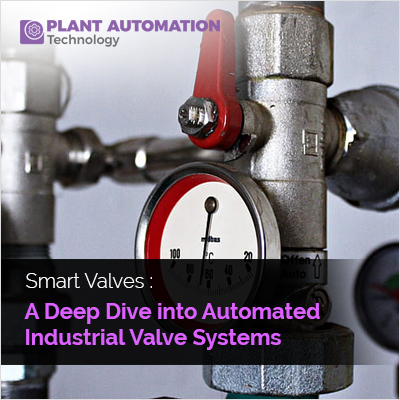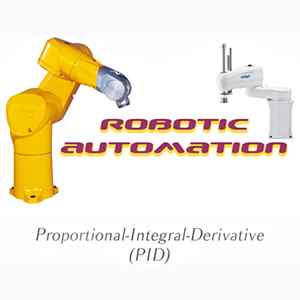Smart Valves: A Deep Dive into Automated Industrial Valve Systems

In the landscape of manufacturing processes, the control of fluid and gas flow is essential, with industrial valve systems standing out as pivotal players. With industries embracing greater automation, smart valves have emerged as integral components for optimizing efficiency, minimizing downtime, and elevating overall operational control. This article will explore the intricacies of automated industrial valve systems, shedding light on the innovative technologies steering their advancements, their varied applications spanning industries, and the tangible advantages they bring to the forefront of modern industrial operations.
Section 1: Understanding Automated Industrial Valve Systems
In the realm of industrial processes, valves emerge as essential components with a pivotal role in regulating the flow of fluids and gases across various manufacturing applications. Their importance lies in the precision and control they provide, significantly impacting the efficiency and safety of industrial operations. The evolution of automation has brought about a transformative shift in the domain of industrial valves, moving away from manual control towards sophisticated automated systems. Tracing this historical progression reveals an evolution characterized by increased precision, reliability, and adaptability in the functionalities of valves. In today's landscape, the introduction of smart valves represents the culmination of technological advancements. These intelligent systems integrate a network of key components that work together synergistically to enable automation.
Sensors, meticulously designed to capture real-time data, form the sensory apparatus, feeding critical information to the valve control system. Actuators, serving as the muscular force, translate these instructions into precise mechanical movements, executing the desired valve adjustments. The control systems, equipped with advanced algorithms and interfaces, orchestrate the entire process, ensuring seamless integration into industrial networks and facilitating optimized operations. In understanding the components of smart valves, one delves into the intricate amalgamation of technology that has reshaped the landscape of industrial fluid and gas control.
Section 2: Technologies Driving Innovation
In the dynamic realm of automated industrial valve systems, a wave of technological innovations is steering the trajectory toward unprecedented efficiency and control. At the forefront is the transformative power of Internet of Things (IoT) integration, reshaping traditional valves into interconnected devices. This evolution enables real-time monitoring and control, fostering a responsive ecosystem where valves adapt swiftly to changing industrial conditions.
Concurrently, advanced sensor technology assumes a pivotal role, serving as the sensory apparatus that empowers smart valves with the ability to capture precise and reliable data. This data, in turn, forms the foundation for intelligent decision-making within the valve systems, enhancing their adaptability and responsiveness. The integration of machine learning further propels innovation by leveraging algorithms for predictive maintenance. This proactive approach analyzes historical performance data to foresee potential issues, thereby reducing downtime and elevating the overall reliability of automated valve systems.
Additionally, the seamless integration of smart valves into industrial networks is facilitated by the impact of wireless communication technologies. This wireless connectivity ensures swift and efficient data exchange, creating a cohesive industrial network that optimizes communication between valves and control systems. As these technologies converge, they not only drive innovation but also redefine the capabilities of automated industrial valve systems, paving the way for a future where fluid and gas control is characterized by unprecedented intelligence and responsiveness.
| Also Read: Flow Control Essentials: Exploring the World of Industrial Valves |
Section 3: Applications Across Industries
The versatility of automated industrial valve systems finds extensive applications across a spectrum of industries, each benefiting from the precision and efficiency these smart valves offer. In the oil and gas sector, automated valve systems play a pivotal role in upstream, midstream, and downstream operations. From controlling the flow of crude oil in extraction processes to managing refined products during transportation and distribution, smart valves contribute to enhanced safety, efficiency, and operational control within the oil and gas industry.
In chemical processing, the role of smart valves is instrumental in ensuring precision and safety throughout manufacturing operations. These valves facilitate precise control over the flow of chemicals, enabling manufacturers to maintain optimal conditions and prevent hazardous incidents. The integration of smart valves in chemical processes aligns with stringent safety standards while concurrently improving overall production efficiency.
The applications of automated valves extend to the realm of water and wastewater treatment, where these systems are employed in water treatment plants. Automated valves contribute to improved efficiency and resource management by precisely regulating the flow of water and treatment chemicals. This not only enhances the effectiveness of water treatment processes but also ensures the responsible use of resources, addressing sustainability concerns in the water industry.
In the realm of power generation, the significance of smart valves cannot be overstated as they play a pivotal role in enhancing the efficiency of power plants. These valves serve as integral components, overseeing the regulation of steam, water, and various fluids within power generation systems. Through their ability to deliver precise and automated control, smart valves contribute significantly to the overall efficiency of power plants, leading to heightened energy output and diminished operational costs.
Fundamentally, automated industrial valve systems find applications across crucial industries, augmenting operational efficiency, safety, and resource management within sectors such as oil and gas, chemical processing, water treatment, and power generation.
Section 4: Benefits of Automated Industrial Valve Systems
The adoption of automated industrial valve systems brings forth a myriad of benefits, revolutionizing the landscape of fluid and gas control within manufacturing processes. One of the primary advantages lies in enhanced efficiency, where automation optimizes the speed and precision of valve operations. Smart valves, equipped with advanced sensors and control systems, facilitate rapid and accurate adjustments, significantly improving the overall efficiency of industrial processes.
Cost reduction stands as another compelling advantage of automated valve systems. The potential for substantial savings arises through reduced energy consumption and minimized downtime. Automation ensures that valves operate with optimal efficiency, mitigating unnecessary energy expenditure and preventing costly disruptions in production. The proactive approach enabled by predictive maintenance algorithms further contributes to cost reduction by minimizing unplanned downtime and subsequent financial implications.
Safety improvements constitute a critical benefit of smart valves, contributing to a safer working environment. Through the integration of remote monitoring and control capabilities, these systems enable operators to manage valves from a distance, reducing the need for direct human intervention in potentially hazardous conditions. This not only enhances operational safety but also safeguards personnel from exposure to dangerous environments, fostering a secure workplace.
When considering the environmental impact, automated valves play a crucial role in championing sustainable industrial practices. Through precise control over fluid and gas flow, these systems actively contribute to resource conservation and optimized usage. The resulting efficiency gains lead to reduced waste and energy consumption, aligning with broader objectives related to environmental sustainability and corporate responsibility.
In conclusion, the benefits of automated industrial valve systems extend beyond operational enhancements, encompassing cost savings, safety improvements, and a positive environmental impact. As industries continue to prioritize efficiency, safety, and sustainability, the adoption of smart valves emerges as a strategic imperative, reshaping the dynamics of fluid and gas control in manufacturing processes.
Section 5: Challenges and Future Trends
Although the integration of automated industrial valve systems brings transformative advantages, it also poses a series of challenges that demand thorough consideration. Primary among these challenges are cybersecurity concerns, particularly as connected valve systems evolve into integral components of smart, interconnected industrial networks. The potential vulnerability of these systems to cyber threats raises critical issues related to data integrity, confidentiality, and the overall security of crucial industrial infrastructure. Effectively addressing these challenges demands a proactive cybersecurity approach, incorporating robust encryption, authentication measures, and ongoing monitoring to fortify against potential breaches.
Looking ahead, the integration of smart valves aligns seamlessly with the principles of Industry 4.0, marking a significant trend in the future of manufacturing. Industry 4.0, characterized by the interconnectedness of machines and systems through the Internet of Things (IoT), emphasizes data-driven decision-making and automation. Smart valves play a crucial role in this paradigm, contributing to the creation of intelligent and adaptive manufacturing environments. As industries embrace the fourth industrial revolution, the integration of smart valves is poised to become a cornerstone, enhancing overall operational efficiency and adaptability.
Advancements in materials and design represent a key focus in ongoing research and development efforts within the realm of automated valve systems. Innovations in materials aim to enhance the durability, corrosion resistance, and overall performance of valves, ensuring longevity and reliability in diverse industrial conditions. Concurrently, advancements in design focus on streamlining the form and functionality of smart valves to meet evolving industry demands. These ongoing efforts in research and development contribute to the continuous improvement of automated valve systems, shaping a future where these critical components evolve in tandem with technological progress, industry requirements, and sustainability goals.
Conclusion:
In summary, embracing automated industrial valve systems marks a crucial transition toward more intelligent and efficient industrial processes. With industries placing increased emphasis on automation to enhance productivity, reliability, and safety, smart valves are poised to play a central role in shaping the future of manufacturing. This article stands as a comprehensive resource for industry professionals seeking insights into the advancements and diverse applications of automated industrial valve systems.







